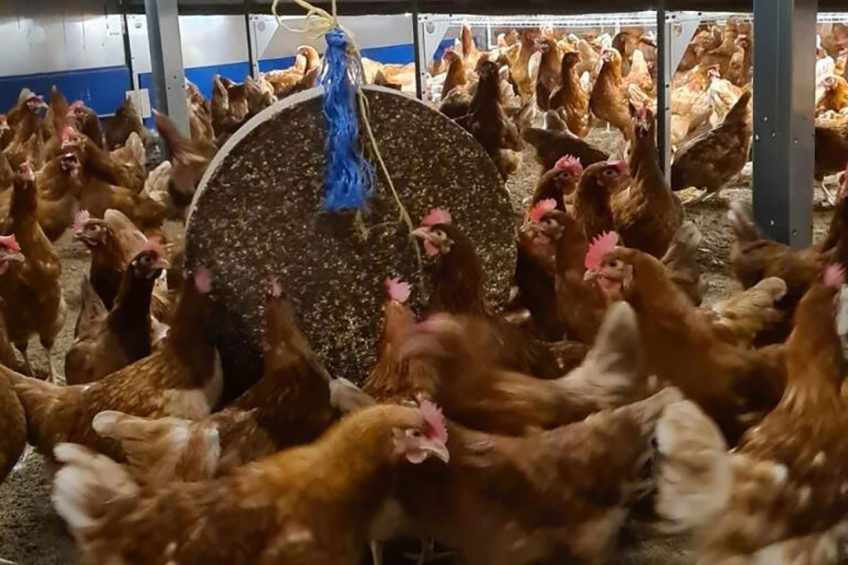Maintaining bird welfare during AI housing measures

Keeping birds happy and healthy indoors during the UK’s current ban on outdoor roaming is paramount for Leicestershire poultry farmer Phill Crawley.
Phill works with his brother Ady on the family farm in the East Midlands, which was established nearly 50 years ago. The farm consists of both free-range and colony laying hens, and the brothers also pack and market both their eggs and those from contracted producers. The business services all sectors of the market, including major retailers, the food service sector, and local shops.
Animal welfare of utmost importance
He takes the risk of avian influenza (AI) very seriously and animal welfare is of utmost importance, which has meant that he has been making some changes to ensure that birds are still happy and healthy while housing measures are in place. Hens, he says, are creatures of habit, so there will be a period while they acclimatise to the new arrangements, and to keep them happy he has invested in some enrichments.
“I’m going to trial some supplemental pecking blocks from 2 different suppliers to see what the birds make of them. I think it is important to look at how effective different products are at entertaining the birds and enriching their environment.
“I’ve also bought 40 plastic inflatable footballs to put in the sheds for the birds to play with. Interestingly, they seem to like the red ones but are not so keen on the green, yellow and blue ones.”

First housing order
It is not the first time Phill, who is the NFU’s Poultry Board vice-chairman, has had to house the birds indoors. During the 2016-7 AI outbreak, he put road cones in the poultry houses and found the birds really liked the reflective bands, happily pecking on them for hours.
“We also strung up hay nets over the litter area (ones with small holes about 1 inch in diameter otherwise they get emptied too easily) filled with bales of Lucerne. The height at which they are hung is important – too low and the birds will go through the contents quickly and they will also lean on them to lay; too high and they will not reach it! They need to have to stretch so they work for it and to keep them entertained. The added benefit of lucerne is that it adds fibre into their diet.”
Extra litter in scratch area
The scratch area in the poultry house is very important so extra litter has been added giving the hens something to play and dust bath in. It also makes for a cleaner environment. Scattering grit around the floor can also help encourage natural scratching behaviour and help keep the hens occupied.

Phill says that he will be walking the sheds more frequently to move the birds around, especially in the morning to discourage them from congregating around the pop-holes. “Increasing the number of enrichments means we may get more floor eggs so by walking through the birds we’re gently moving them around and discouraging them from settling in corners. Although the floor eggs are more difficult to find with all the extra toys in the shed, time spent in with the birds allows us to keep an eye on their behaviour, so if they are getting a bit over-zealous with their dust bathing, we bring in a distraction.”
No one right answer
Each shed has its challenging areas and for Phill it is the narrower scratch areas in flat deck houses which have proved more challenging in keeping the birds entertained. He says there is no one right answer: “Maintaining good bird health and welfare and keeping AI out with tightened biosecurity is our priority; there is no “one size fits all”-approach, but with a bit of thought and spending time observing the birds, poultry keepers can establish what works best for their own flock.”
Join 31,000+ subscribers
Subscribe to our newsletter to stay updated about all the need-to-know content in the poultry sector, three times a week. Beheer
Beheer











 WP Admin
WP Admin  Bewerk bericht
Bewerk bericht